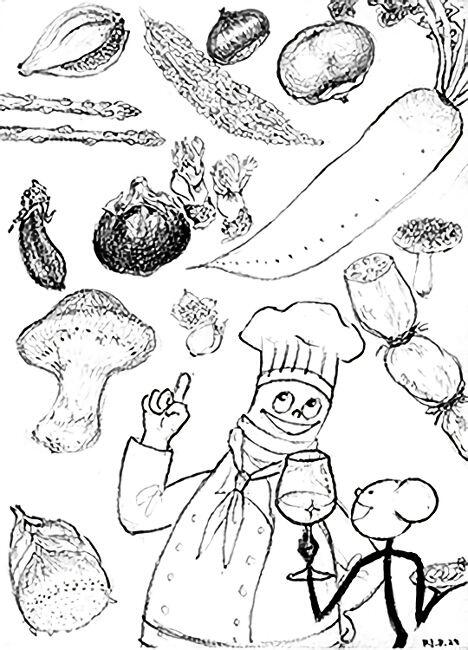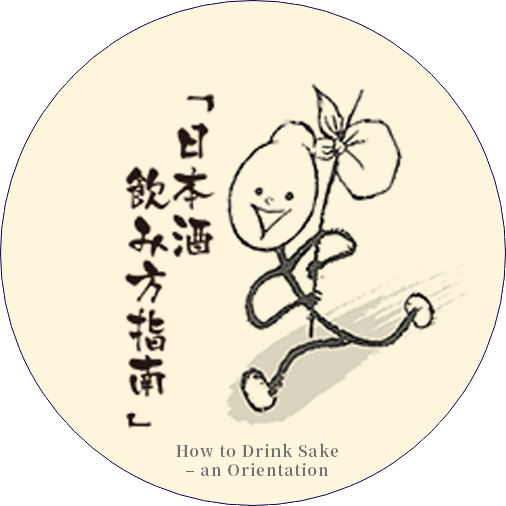| Yeast |
“What a mild autumn sky! Kimoto, it’s again the season of matsutake mushrooms.” |
| Kimoto |
“Ah, I like tempura of matsutake mushrooms with a cup of warm Kaiden (Masakura) sake! There are many types of seasonable vegetables in Japan which fit well to sake.” |
| Yeast |
“Indeed. When I see vegetables which are in season, I start longing for sake! It’s a very Japanese way of drinking which uses the season as relish!” |
| Kimoto |
“In autumn we also find interesting mushrooms other than matsutake, such as umami-rich shiitake. When combined with junmai sake, the multiplier effect is incredible!” |
| Yeast |
“Very delicious! As seasoning we can use soy sauce, or miso paste.” |
| Kimoto |
“Yes, the interesting thing about vegetables is that pairings differ according to the seasoning. In winter I love Japanese radish (daikon) soaked in dashi stock so that it has a very rich taste.” |
| Yeast |
“Very nice! Talking about winter vegetables, for example in case of the typical New Year dishes (osechi), spicy hot lotus root (renkon) fits well to sake, as does sweet kurikinton (mashed sweet potatoes mixed with chestnuts).” |
| Kimoto |
“Yes! I really want you to try warm Junmai Kimoto with these. But chestnuts are not a vegetable but a fruit.” |
| Yeast |
“I hadn’t realized that. Then I have to think more about which fruits fit to sake as well. But let’s first talk about the vegetables which are in season in the springtime.” |
|
 |
| Kimoto |
“OK. Typical spring vegetables are the buds of Japanese butterbur (fukinoto) and sprouts of the Japanese angelica tree (tara no me). Their bittersweetness is the true taste of springtime. That bitterness also has a detox and anti-aging effect.” |
| Yeast |
“A good sake to pair with is our Yukishibori Nigori-zake. Its fine bubbles pair well with the bittersweetness, creating the image of spring.” |
| Kimoto |
“Yes. The crunchiness of bamboo shoots (takenoko) also belongs to springtime. Our Karakuchi Kimoto would be a good match.” |
| Yeast |
Kimoto, do vegetables which are typical of the season, also exist abroad?” |
| Kimoto |
“Of course! In early summer, Germans look eagerly forward to white asparagus. With its elegant aroma and gentle taste it sure is the King of Vegetables. Well cooked, they are great with butter sauce. As sake I recommend Kaiden and Masakura.” |
| Yeast |
“That must be delicious! Such a mild and creamy taste is sure to match well with a junmai ginjo made with the kimoto method.” |
| Kimoto |
“Eggplant (nasu) is a typical Japanese summer vegetable. As it fits well to oil, the best way to enjoy it is as sauteed food. As sake a solid and powerful junmai sake is best. Rakutenmei, brewed in wooden vats, is the perfect combination. Finally we should also mention bitter gourds (goya), which have lots of nutrition and help relieve summer fatigue. The best combination with bittersweet and fresh goya is our Junmai Kimoto Sokai Reishu! That ends our round trip through the seasons.” |
| Yeast |
“Thanks! But I won’t let you rest as we still have to talk about fruit.” |
| Kimoto |
“I got it! With fruit, it’s easy to pair ginjo type sakes with their fruity aroma. Apples, muscat grapes, melons, and bananas pair well with the aroma of ginjo. But our Honjozo Kimoto is also unexpectedly suitable.” |
| Yeast |
“Was it in the past customary to drink sake with fruit?” |
| Kimoto |
“In the past it was said you wouldn’t get a hangover when eating some persimmon (kaki). That is thanks to the detoxification effect of the tannin in persimmons. Also dried persimmons are a good sake snack.” |
| Yeast |
“I see! Also figs (ichijiku) go well with sake, both as dry fruit or stewed in soy sauce and sugar.” |
| Kimoto |
“Dry fruit fits well to matured sake. Recently sangria consisting of sake containing fruit and dry fruit is quite popular.” |
| Yeast |
“That’s interesting! I also want to try it!” |





